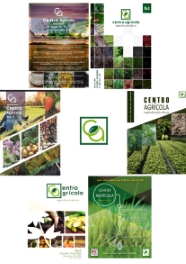CE: 1721 CF: cag10218
ARTÍCULO DE INVESTIGACIÓN
Evaluation of sugar cane rippers in of the company CALESA, Panama Republic
Evaluación de maduradores de caña de azúcar en la empresa CALESA, República de Panamá
Héctor Jorge Suárez1, Antonio Menéndez Sierra2, Reinaldo Meneses Sáenz3, Einar Martínez de la Parte4 e Irenaldo Delgado Mora2
1 Compañía Azucarera La Estrella S.A. Aguadulce, Rep. Panamá, APDO 0201-00049, E-mail: This email address is being protected from spambots. You need JavaScript enabled to view it.
2 ETICA Centro Villa Clara. Estación Territorial de Investigaciones de la Caña de Azúcar, Autopista Nacional km 246, Ranchuelo, Villa Clara, Cuba, E-mail:This email address is being protected from spambots. You need JavaScript enabled to view it.
ABSTRACT
Results of three new rippers (DP 98, Moddus (Trinexapac-ethil CE 250) and Biqticon SC) in three fields are presented. The evaluation was made between the third and fifth week before harvest. The tons of pol per hectare (t pol ha-1) were calculated considering the percentage of pol in cane of the last week evaluated during each test and the yield of the field. Based on the production of sugar per hectare, the cost - benefit analysis was carried out on all treatments. The results on the regrowth (at 50 days after the cut) were subjected to the analysis of variance of fixed effects, also, the percentage of increase with respect to the control was determined. DP-98 (PO3) and the mixture of glyphosate + DP-98 (Round-up CS48 + PO3) reached values higher than the control in the sugar content from the first week of evaluation, while glyphosate surpassed it from the third week. The cost - benefit ratio was in favor of glyphosate. Moddus 250 EC (trinexapac- ethil CE 250) had a behavior lower than the control during the five weeks that the experiment was evaluated, which could be given that this product is recommended to harvest from the sixth week. In this variable there was an increase from the first week in favor of Biqticon, the cost - benefit ratio for this product was 1.09 higher than glyphosate and control. The glyphosate treatment increased the number of dead strains in the regrowth by 9% with respect to the control.





